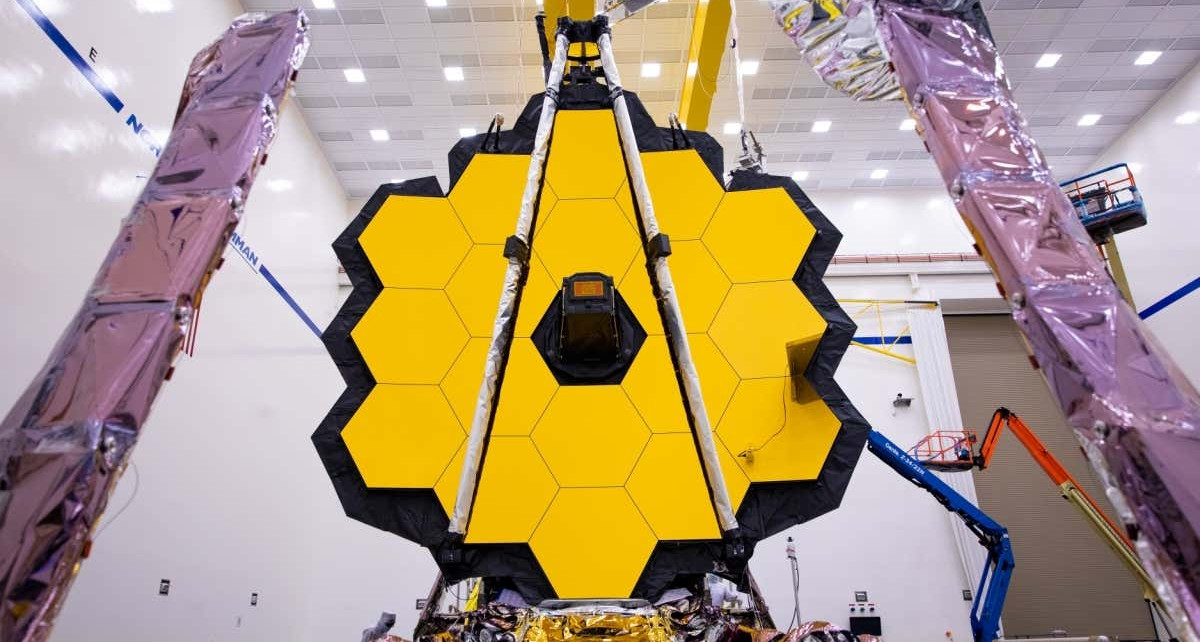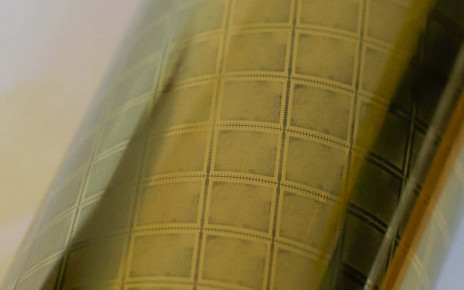[ad_1]
The James Webb Space Telescope (JWST) is NASA’s planned successor to the Hubble Space Telescope, due to be launched into space on a European Space Agency (ESA) Ariane 5 rocket. The ambitious space observatory is planned to take off from the European Spaceport launch site near Kourou, in French Guiana, on 18 December 2021, after a series of delays. Since the project was first envisioned in 1996, the cost has overrun from $0.5 billion to almost $10 billion.
Although the JWST is often described as a replacement for Hubble, its capabilities differ slightly compared to the iconic telescope that came before it. While the Hubble Space Telescope looks mostly in the visual and ultraviolet parts of the electromagnetic spectrum, the JWST will be looking at longer wavelengths, in the infrared.
The JWST is designed to peer even further back to the edge of the observable universe, looking back in time. Light from objects in this distant part of the universe – like the earliest galaxies – is highly redshifted, which means we need infrared telescopes to observe them. The JSWT will be able to see far enough to see what the universe looked like around 100 to 250 million years after the Big Bang, about 13.6 billion years ago, when the first stars and galaxies started to form.
JWST is designed differently to Hubble, with a set of 18 hexagonal shaped mirrors arranged in a honeycomb shape 6.5 metres across, compared to Hubble’s spherical 2.4 metre diameter primary mirror. This means JWST will have a 6.25 times larger surface area to collect light compared to the Hubble Space Telescope. The JWST will have upgraded cameras and will be protected by a sun shield 22 by 12 metres wide.
The JWST is going to be venturing much further from Earth than Hubble, which orbits at an altitude of around 570km above Earth’s surface. The JWST will sit in a Lagrange point between Earth and the sun, a point at which the gravitational pull between two orbiting bodies balance out, meaning something placed at that point can stay there with little effort. There are five of these in the Earth-sun system, and the one the JWST will head towards sits 1.5 million kilometres (1 million miles) from Earth, in the opposite direction to the sun.
The James Webb Space Telescope will be used to study young galaxies, to answer questions of how galaxies assemble and to peer through clouds of dust to watch stars being formed. But it will also look much closer to home, studying nearby exoplanets and objects within our solar system such as Mars, the gas giants, Pluto, and even some asteroids and comets.
Discover more about our understanding of the universe
[ad_2]
Source link




